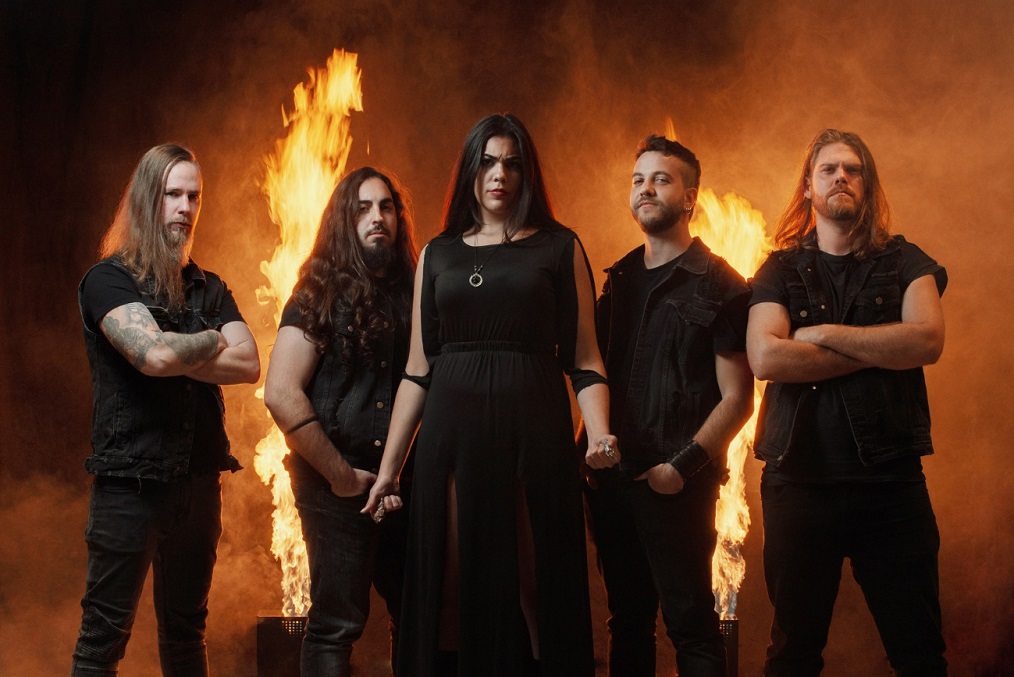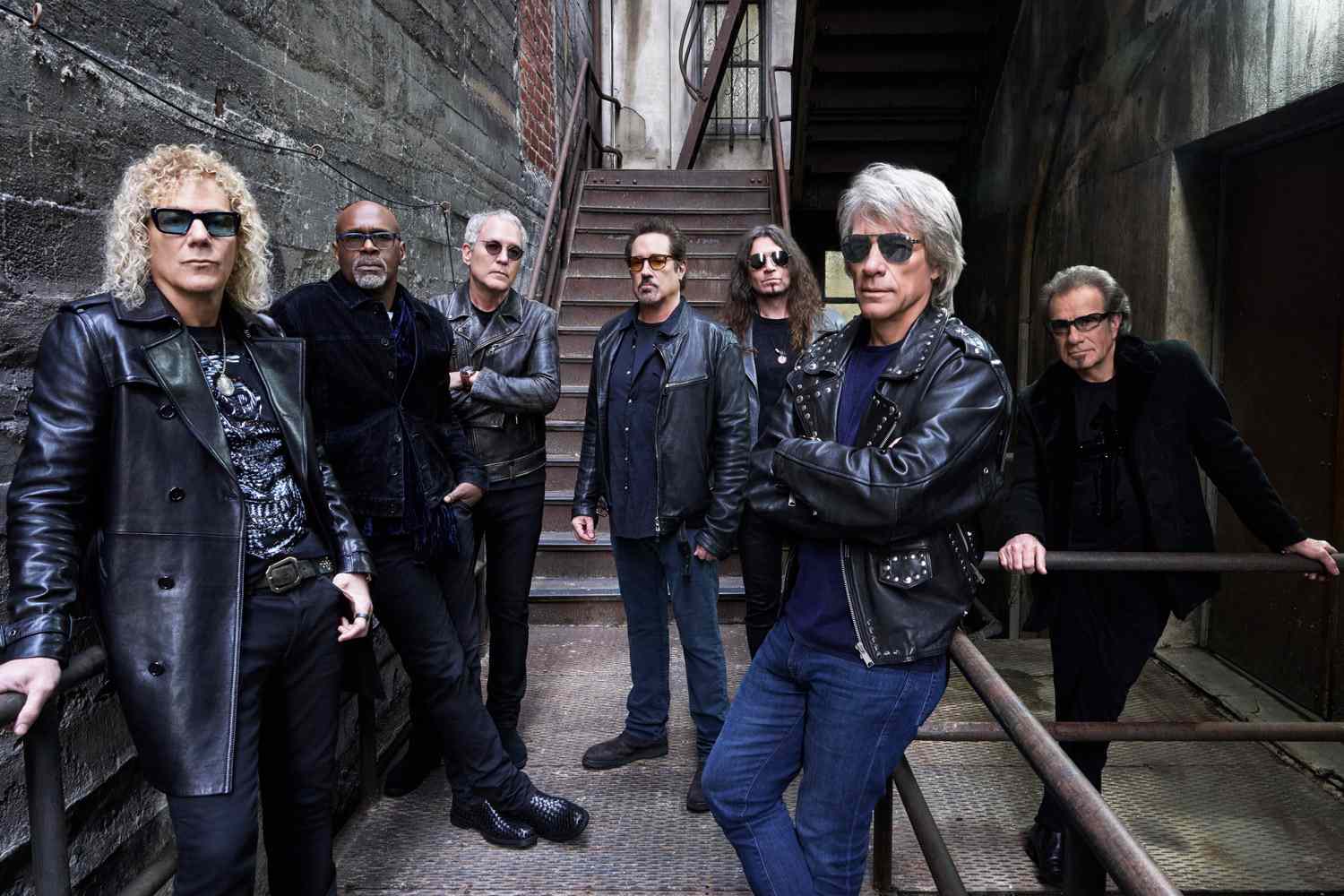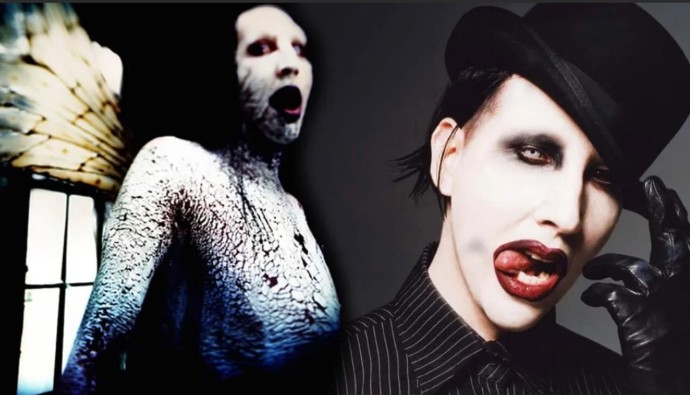The Dark World Reflected in Music
Let us now listen to the story of the birth of heavy metal music through the memories of Geezer Butler:
“In 1969, we wrote our first song, Wicked World, at The Railway Pub in Birmingham. We only had one chance, and the pub owner was not very fond of our loud music. Our song, which spoke of the dark and grim aspects of life, had absolutely nothing to do with the trendy ‘Flower Children’ and their music of the time:
The world today is such a wicked place
Fighting going on between the human race
People go to work just to earn their bread
While people just across the sea are counting their dead.
“In 1969, as the Vietnam War was raging with full force, the world was far removed from the ideals of peace and love that the hippies promoted. Hearing songs on the radio about trivial subjects like love and heartbreak drove me insane. In that awful pub in Nechells, we were trying to express our struggles to the world. Nobody else was singing about this dark side of life, and we thought it was something we had to do.
When we got an opportunity to perform at the Star-Club in Hamburg, we all started to showcase our talents and truly flourish. Ozzy began to understand the importance of being a frontman and started building a great relationship with the audience. In Hamburg, the foundations for many of the tracks that would appear on our first Black Sabbath album, such as N.I.B., were laid. At the club, we would play a piece like a jam session for about forty to forty-five minutes, experiment with it, and gauge the audience’s reaction. Of course, when the audience consisted of only three or four people, our job was easier.”
The music of Black Sabbath was not created at once; it was shaped by the “heaviness” and darkness of the Aston neighborhood where the band members grew up. Heavy metal music precisely reflects the environment from which Black Sabbath emerged.
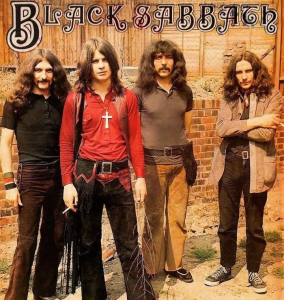
(Black Sabbath in the 1970s)
“At our next rehearsal, I played a tritone on the bass, and Tony added a tritone riff on top of it. The tritone, consisting of three whole tones, was historically known as the “Devil’s Interval” and was banned by the church in the Middle Ages for its unsettling sound. The piece we created, characterized by the tritone, would become our famous song “Black Sabbath”. I believe Holst inspired the first riffs of heavy metal music and essentially created heavy metal. Since we wrote “Black Sabbath”, the tritone has become synonymous with heavy metal.” – Geezer Butler
The Devil in Music
When we returned to England, we continued our rehearsals at our traditional rehearsal spot, the Aston Community Centre, and began searching for a record company to produce and release our work. Jim Simpson thought we were too dark and “heavy.” Of course, we were! This music was about our lives.
As a band, our lives changed in 1969 when I watched King Crimson perform at The Mothers Club. Their setlist included a rendition of Gustav Holst’s “Mars” from his The Planets Suite. I was stunned, could not believe what I was hearing, and was deeply moved. The next day, I rushed to the record store and bought Holst’s Planets. I listened to “Mars, the Bringer of War” repeatedly. Until then, I had no interest in classical music, but this piece was angrier and more menacing than any rock music I had ever heard.
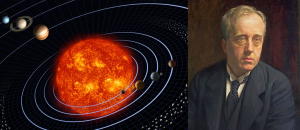 (Gustav Holst’s “Mars” from his The Planets Suite)
(Gustav Holst’s “Mars” from his The Planets Suite)
At our next rehearsal, I played a tritone on the bass, and Tony added a tritone riff on top of it. The tritone, consisting of three whole tones, was historically known as the “Devil’s Interval” and was banned by the church in the Middle Ages for its unsettling sound. The piece we created, characterized by the tritone, would become our famous song “Black Sabbath”. I believe Holst inspired the first riffs of heavy metal music and essentially created heavy metal. Since we wrote “Black Sabbath”, the tritone has become synonymous with heavy metal.
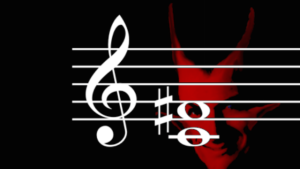
(Devil’s Interval in three whole notes with the unholy! sound)
It only took us a few hours to write the song “Black Sabbath”. Tony played the riffs, and Ozzy sang the lyrics. That night, we performed it for the first time at the Pokey Hole club. The audience expected traditional blues. When we started playing “Black Sabbath”, everyone stopped talking and listened intently. After their initial shock, they went wild, and their eyes lit up with excitement. And we realized we had created a brand-new genre of music.”

(Debut album by Black Sabbath with the opening track “Black Sabbath -1970)
“We were determined to reflect the dark side of life to our listeners by writing songs about poverty, hunger, and environmental pollution—topics everyone avoided discussing.” – Geezer Butler
The Mothers Club and Erdington
“As a group, we felt that we needed to change our band’s name to match the music we were making. When I suggested the name Black Sabbath, which I felt summarized us as a group, our mentor Alvin Lee thought it was too dark and instead suggested the name Papa Sun (can you imagine!). None of us liked that suggestion, and under the new name Black Sabbath, we performed for the first time on August 30, 1969, in Workington Cumberland. We were determined to reflect the dark side of life to our listeners by writing songs about poverty, hunger, and environmental pollution—topics everyone avoided discussing.” – Geezer Butler
Our next stop with Jez Collins was what remains of the Mothers Club, located in the Erdington district, north of Birmingham. In the late 1960s and early 1970s, Mothers was the beating heart of rock music, a haven for underground music and culture. Located in a Birmingham suburb inhabited by middle-income workers, the club only operated for three years, from 1968 to 1971. Yet, it surpassed even New York’s famous Fillmore East rock club and was named the best rock club in the world by Billboard Magazine.
So many legends passed through this club: Black Sabbath, Pink Floyd, The Who, Jethro Tull, Elton John, and Joe Cocker, who were not yet stars at the time. Pink Floyd recorded their Ummagumma album at Mothers. Bands like Led Zeppelin, King Crimson, and Fleetwood Mac also performed there.
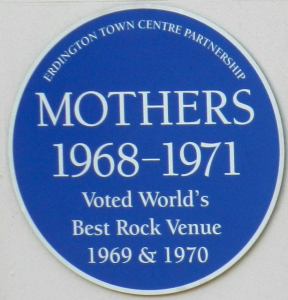
(Blue plaque of Mothers Club)
The tiny concert venue, marked by a faded blue plaque (a circular marker in the United Kingdom commemorating historically significant people and events), was located on the upper floor of a small two-story building on Erdington High Street. Today, it resembles an old, abandoned photograph album—a ghostly relic of its glorious past.
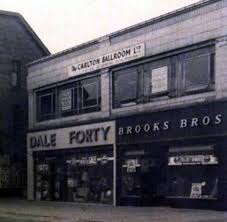
(Carlton Ballroom 1950s)
The venue, which began as the Carlton Ballroom dance hall in the 1950s, transformed into a rock temple in 1968. The transformation began when the venue’s operators, John Singer, John “Spud” Taylor, Phil Myatt, and Gary Surman, leased the space for eight years in 1963. Initially a dance hall, they also operated jazz clubs and discos in other locations and had an excellent sense of good music and a clear vision. Even The Moody Blues performed at the Carlton Ballroom.
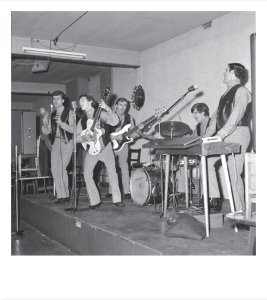
(Moody Blues performing at Carlton Ballroom)
By 1968, progressive rock was emerging as a new music movement alongside the hippie and flower power trends. The club managers began testing the impact of progressive rock bands like Jethro Tull and Band of Joy on audiences at the Carlton. As the venue began to change its character, the name also needed to change. Inspired by a film, Phil suggested the name Mothers, evoking feelings of warmth, belonging, and home. Young people would often say, “I’m going to Mothers on Sunday,” making the name feel relatable, cosy and catchy.
“Every night at Mothers felt like a mini Woodstock, with the outfits, the drugs, and the atmosphere.”
Mini Woodstock at Mothers Club – The Best Rock & Roll Club You Never Heard Of
The Mothers Club officially opened on August 9, 1968, with a performance by Duke Sonny. John Taylor and Phil Myatt, as mentioned earlier, had a deep understanding of good music and were prepared to take financial risks. Concerts at Mothers were broadcast nationwide through the radio program of DJ John Peel.
One club member recalls:
“Every night felt like a mini Woodstock, with the outfits, the drugs, and the atmosphere.”

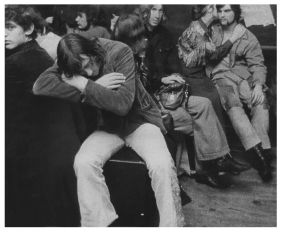
(Memories from the Mothers Club)
“Every group that claimed to make “heavy” music passed through Mothers, including Joe Cocker, Eric Clapton, Blodwyn Pig, John Mayall, Fleetwood Mac, Led Zeppelin, The Moody Blues, Fairport Convention, Jethro Tull, and Ten Years After.” Güzin Paksoylu
In this creative space, people from all walks of life—students, musicians, and workers—came together to enjoy good music at affordable prices. Bands formed and disbanded, and new music emerged in this vibrant environment. Mothers became more than a nightclub; it turned into an unparalleled cultural phenomenon.
People came to Mothers to listen to progressive music that fed their ears rather than their eyes. The bands that performed there were a “Who’s Who” of progressive music. Every group that claimed to make “heavy” music passed through Mothers, including Joe Cocker, Eric Clapton, Blodwyn Pig, John Mayall, Fleetwood Mac, Led Zeppelin, The Moody Blues, Fairport Convention, Jethro Tull, and Ten Years After.
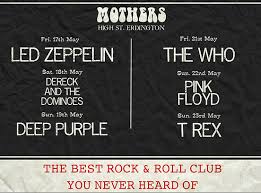

(Mothers Club Banners)
“Musicians like Robert Plant and John Bonham, if intoxicated or unable to return home, would sleep in the garden of the church across the street.”
The Underground Temple: Mothers Club
To enter Mothers, you had to wait in a seemingly endless queue on High Street before climbing up to the second floor. Arriving early was essential, especially on Sundays, to secure entry into the club. The dimly lit space was adorned with posters, and the relaxed dress code made everyone feel at ease. The women’s restroom was labeled “Sisters,” while men’s was marked “Brothers.”
Music lovers and musicians who managed to get into this tiny venue—about 400 to 500 people crammed together—sweated it out while listening to rock music. Standing close to the stage meant it was impossible to move around or approach the bar. The lack of ventilation, combined with the heat and cannabis smoke, often caused some attendees to faint, forcing others to step over them to continue enjoying the night.

(Mothers Club banner)
The club was sometimes so crowded, hot, and suffocating that condensation would form on the low ceiling and drip onto the audience. In this unique environment, women would sometimes remove their tops due to the heat, walking around in their bras. Musicians like Robert Plant and John Bonham, if intoxicated or unable to return home, would sleep in the garden of the church across the street.
The club’s DJ, John Peel, reportedly wiped records soaked in ceiling condensation before continuing to play his set. Jez Collins, who has studied the club’s history, recounts:
“I had the chance to review John’s diaries and even interview him. I examined all the bands that performed at Mothers, the fees they were paid, letters, and old photographs. I digitized all of it. Unfortunately, John passed away a few years ago. I am working tirelessly to celebrate, remember, and preserve this music heritage—not just for nostalgia or to go back to those days, but because knowing your past provides inspiration for your future. It is all about continuity. “
“Compared to Liverpool or Manchester, we Brummies (residents of Birmingham) do not promote our music heritage as much as we should. My friends and I are trying to change this. Think about it, Güzin: who would think of visiting what was once the most important rock venue of its time in this remote corner of Birmingham today?” Indeed, perhaps only I, Güzin, from Turkey!
“Today, the venue is abandoned and forgotten, its fate mirroring its neglected surroundings. The ground floor now houses a store akin to our discount markets like A101 or Şok, with vegetable stands spilling out onto the street. Seeing people selecting cabbages at the same location where rock history was written filled me with sadness. How many of those shopping for cucumbers and tomatoes really does know about the history of this building?” Güzin Paksoylu
The Tragic Transformation of a Legendary Club
On Wednesdays, when Black Sabbath performed at Mothers, club membership cards in purple and orange were distributed for a small fee. The club eventually reached 45,000 members and was known for its warm, informal, and mystical atmosphere. Everyone was friends with everyone else, and its name was etched into rock history.
The fame of the club paralleled that of the bands and artists who performed there, such as Pink Floyd, Deep Purple, Jethro Tull, Chicken Shack, and Joe Cocker. Celebrities like Robert Plant, John Bonham, and Joan Baez also contributed to the club’s unique atmosphere and reputation by visiting to watch other bands perform.

(Tragic look of the Mothers Club – 2024)
Mothers lifted the barriers between musicians and the audience, allowing attendees to chat with artists backstage.
However, like all good things, Mothers came to an end on January 3, 1971, when Phil Myatt handed back the keys to the landlord after the eight-year lease expired. The underground temple of rock music transitioned into its next chapter as a furniture shop, stepping into its new life with a heavy heart.

Today, the venue is abandoned and forgotten, its fate mirroring its neglected surroundings. The ground floor now houses a store akin to our discount markets like A101 or Şok, with vegetable stands spilling out onto the street. Seeing people selecting cabbages at the same location where rock history was written filled me with sadness. How many of those shopping for cucumbers and tomatoes really does know about the history of this building?
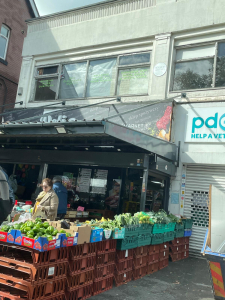
(Discount market at Mothers Club building)
“Metal music did not fall from the sky; it evolved from Birmingham’s harsh working conditions and the different sounds Tony heard around him. In Manchester and Liverpool, however, local governments understand the power of music and art to attract tourists and investment.” Jez Collins
Liverpool, Manchester, and Birmingham
Jez Collins, the director and founder of the Birmingham Music Archive, is determined to preserve and promote Birmingham’s musical heritage and culture.
One of the questions I asked him was why a city with such a rich musical culture is not as visible as Liverpool, famous for The Beatles, or Manchester, home to iconic groups like Bee Gees, New Order, Simply Red, Sex Pistols, and Oasis. Let us hear his answer:
“First of all, Birmingham is a very large city, and the city council directs resources toward education and welfare rather than culture and arts. In Manchester and Liverpool, however, local governments understand the power of music and art to attract tourists and investment.
Manchester, for example, combines music with other industries like football and even fashion, as seen in this year’s CHANEL collection inspired by Manchester’s music. Liverpool, on the other hand, revolves entirely around The Beatles. Each city has its unique music and cultural dynamics.
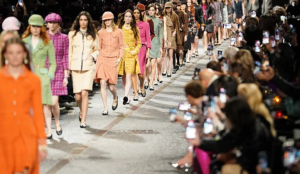

(CHANEL models showcasing The Manchester Collection on Manchester Thomas Street)
I think Birmingham has not fully understood the importance of leveraging its music history. Unlike the mostly white and monocultural music heritage of Liverpool and Manchester, Birmingham’s strength—and perhaps its weakness—is its ethnic diversity. People from South Asia, India, Pakistan, Bangladesh, Ireland, Jamaica, England, and Africa live together here. “
This diversity makes telling Birmingham’s music story more complex compared to, say, The Beatles’ story in Liverpool. As we discussed earlier, Birmingham is not just about Black Sabbath and half of Led Zeppelin—it is also a hub for reggae, ska, and bhangra music. Consider Tony Iommi’s work accident: perhaps his colleagues in the factory were Asian, Indian, Pakistani, or Afro-Caribbean. Metal music did not fall from the sky; it evolved from Birmingham’s harsh working conditions and the different sounds Tony heard around him.”
While Manchester and Liverpool stand out with occasional bursts of iconic bands and music movements, Birmingham’s music has been continuously evolving for almost 60 years, constantly reinventing itself. The venues in Aston and Erdington that we visited are scattered across the city, making it difficult to create a unified music hub. I believe we need to do a better job of telling and sharing the city’s musical legacy.”
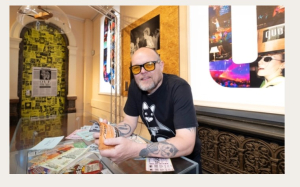
(Jez Collins – Birmingham Music Archive Founder)
“One thing that must be clearly understood is that heavy metal music, in particular, represents anger. In Tony Iommi’s story, for instance, it may be anger toward the machine that cut off his fingers or the harsh conditions of the Aston neighborhood where he grew up.” Jez Collins
Metal Music and Anger
“One thing that must be clearly understood is that heavy metal music, in particular, represents anger. In Tony Iommi’s story, for instance, it may be anger toward the machine that cut off his fingers or the harsh conditions of the Aston neighborhood where he grew up. It could also be anger toward the system. Music is, of course, one of the ways to express this anger and convey emotions.
If you pay attention, different feelings are conveyed in various ways within the genre of heavy metal. For some bands, the anger might be political, while for others, it may be sociological.”
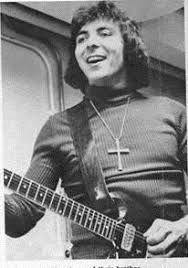
(Young Tony Iommi)
The Birmingham Music Museum
The Birmingham Music Museum, which Jez Collins has dedicated great effort to, is expected to open its doors to visitors in 2027. Let us hear the details from Jez himself:
“The museum will be located in the Digbeth district of Birmingham. Digbeth, with its bohemian structure, art hubs, and galleries, is the city’s new cultural center and creative quarter. The neighborhood is undergoing intense renovation and new construction activities.
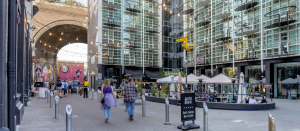
(Digbeth is the new cultural center of Birmingham)
We are working with a real estate development company operating in the area, and they are building a complex that will include the museum. Of course, we (the Birmingham Music Archive) have a lot of work to do in terms of funding and curating the museum’s content.
This will not be a traditional museum, Güzin. For example, you will not see Tony’s guitar on display. Instead, it will be an immersive visual and digital experience that draws visitors into Birmingham’s music history.
All the materials, photographs, posters, and clothing in the archive will be digitally preserved and displayed in the museum. Moreover, here is a fascinating feature: let us say you have an original Black Sabbath poster from 1969. We will digitize it and include it in the museum, allowing us to showcase rare music memorabilia owned by fans.”
As you can see, Jez Collins is working day and night for Birmingham’s music legacy, and the Birmingham Music Museum is not his only project. He is also fighting on different fronts for the reopening of The Que Club, the renovation of The Crown (where Black Sabbath first performed as Earth), and other cultural and musical landmarks.
To Jez, this is a matter of passion and love. His goal is for Birmingham to be recognized as a city of music and to become a cultural hub that attracts tourists, creating added value and employment in the process.
“I realized that the low-income working class neighborhoods of Birmingham, which produced bands like Black Sabbath and UB40, cannot be separated from the music they created.” Güzin Paksoylu
Reflections on Birmingham / Conclusion
As for me, during my countless visits to the city, this time I encountered aspects of Birmingham I had never seen before. From Tolkien’s green and prosperous paradise-like Edgbaston to Stratford-upon-Avon, where time seems to have stopped in the 1500s—Shakespeare’s birthplace and burial site—I was struck by the harsh realities of life in Aston contrasting serene apple orchards and idyllic landscapes of the West Midlands.
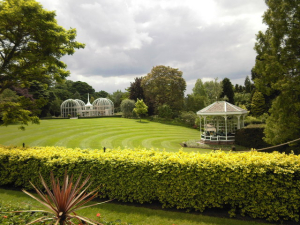
(Idyllic Birmingham – Botanical Gardens – Edgbaston)
I realized that the low-income working class neighborhoods of Birmingham, which produced bands like Black Sabbath and UB40, cannot be separated from the music they created. I was surprised to learn that reggae was one of the most defining music genres of Birmingham.
Seeing the legendary Mothers Club in Erdington abandoned and left to its fate filled me with sadness. I also witnessed the poverty, hardship, and sorrow that lay behind the glamorous lives of world-famous rock stars.
I felt a sense of disapointment toward the members of Black Sabbath, who seemed to have distanced themselves from their birthplace Birmingham except for performances at the grand opening of this mundane bench on Broad Street and the 2022 Commonwealth Games. Could they not invest in The Crown building and restore it to life?

(Ozzy on the bench)
Through Jez Collins’s vast knowledge of the history of heavy metal and the evolution of various music styles in Birmingham, I felt a revelation in a musical sense.
Looking Ahead: The Future of Birmingham in Music
The Birmingham Music Museum and the new cultural hub in Digbeth will represent a major step in telling the city’s musical heritage once the area’s construction is complete. Perhaps this will encourage the iconic bands that emerged from Birmingham to take greater pride in their city’s musical legacy and contribute to its preservation.

(With Jez Collins in front of The Crown)
I would like to express my gratitude to Jez Collins for the interest he showed in me and Metal Oda, as well as for sharing his invaluable insights.
Güzin Paksoylu
References:
– Into the Void: From Birth to Black Sabbath and Beyond – Geezer Butler, 2023
– Mothers 1968–1971: The Home of Good Sounds – Kevin Duffy
All rights reserved. Quotations without reference is forbidden.


